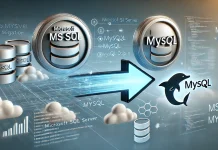MuleSoft is a software organization that enables enterprises to link apps, data, and devices across a variety of computer platforms using an integration platform called the Anypoint platform. Accrediting the certification of Mulesoft training gives you the most up-to-date knowledge about the Mulesoft approach, such as the Anypoint platform capabilities, ESB, and many other features.
Companies can re-architect their service-oriented architecture infrastructure using Anypoint Platform to enhance business agility by removing legacy systems, proprietary platforms, and custom integration code. It also allows for the Technology infrastructure migration to the private or public cloud, and also the prioritization of SaaS apps and other cloud technologies.
Salesforce’s acquisition of MuleSoft
Salesforce bought MuleSoft for 6.5 billion dollars in 2018, making it the company’s largest acquisition ever. Salesforce gained access to useful technology and also MuleSoft’s enormous customer base as a result of this acquisition.
The acquisition has allowed Salesforce to become one of the world’s leading platforms for application networks development capable of connecting devices, data, and corporate programs across any on-premise and cloud environment, despite whether or not they can connect with the Salesforce.
MuleSoft’s Anypoint platform has been integrated into the Integration Cloud of Salesforce, allowing any business to surface their data despite location. This facilitates them in offering connected and intelligent customer experiences around all channels and touchpoints for delivering connected, intelligent customer experiences around all touchpoints and channels.
Getting Introduced for Mule ESB – A MuleSoft Tool
Mule is the runtime engine of Anypoint Platform, which is a lightweight ESB based on Java and an integration platform. It allows developers to connect apps quickly and easily in order for exchanging data. Mule also makes it simple to interconnect disparate systems, regardless of whatever technologies are utilized by the applications, like HTTP, JDBC, Web Services, JMS, and so on. The ESB provides global connection, allows for real-time or batch event orchestration and integration, and can be implemented anywhere.
The most important feature of an ESB was that it allows various applications to communicate with one another by functioning as a system of transit for data among apps within a user’s organization or over the internet.
An ESB’s main benefit is that it acts as a transit channel for data between applications within your company or across the Internet, allowing diverse applications to connect with one another.
A few powerful features of Mule comprises:
- Service Meditation – It entails isolating services from message formats and protocols, allowing for service calls independent of location, and separating the business logic from the messaging.
- Creating and hosting service – This includes using ESB as a service container that is light in weight to host and expose reusable services.
- Data Transformation – It incorporates transferring data between different transport formats and protocols.
- Message Routing – It refers to the use of rules and content to resequence, route, filter, and consolidate messages.
MuleSoft development has an important advantage:
- Open Source – MuleSoft’s components and features may be simply enhanced, and if you can’t find what you need, you can simply create one. MuleSoft also maintains a community page with resources ranging from samples and downloads to user manuals and tutorials. It also offers a forum where members of the community may ask questions and report problems.
Mule 3 to Mule 4 Upgrade: Why Do You Need It?
Mule 4 was published in 2017 to help businesses with their digital transformation activities. Mule 4 provides a few notable integration solutions at a low cost and in an easy manner when compared to its predecessor, Mule 3.
A few of the Mule 3 and Mule 4 significant differences are as follows:
- Error Handling – Mule Error 4 has a minor change in handling errors. While java exceptions are required for handling errors in Mule 3, they are not required in Mule 4. The most significant modification is that instead of a centralized exception block, users could now capture exceptions of a few specific component blocks. The exceptions can also be re-propagated by users.
- Message Transformer – Whenever Mule 3 users use transform messages and DW, the output must be explicitly turned into a java object before it can be used in components of a router. Mule 4, on the other hand, performs the conversion automatically, such that the user doesn’t have to do it manually.
- Using Maven for Improving Application Configuration – Mule 4 has a deep connection with Maven so as to facilitate the configuration and administration of application development processing. This is accomplished by ensuring that each Mule 4 app is a Maven application by default; Mule 3 only includes a Maven project development option.
- Self-Tuning – Mule 3’s runtime necessitates manual threadpool definition tuning. Mule4’s runtime, on the other hand, could be tuned by self and dynamic, guaranteeing that consumers get the best possible performance. There would also be a centralized global speed to change the threads instead of tweaking each flow individually.
- Event Processing – Mule 4 has a considerably more concise event processing model. This is accomplished by eliminating unnecessary hierarchies and workflows. Mule 3 outbound and inbound properties are grouped into a single category called ‘Attributes’ in the message part of the Mule 4 event architecture, and this includes information about the content of a file, updates of a file, payload metadata, flow’s query parameters, message source, message processor information, and outbound and inbound properties.
In comparison to Mule 3, Mule 4’s payload allows for the piggybacking of attachments for flow optimization. While there were any changes to an event in Mule 4, it is created, which aids in avoiding data discrepancies around all threads running or other events which depend on it.
- DataWeave 2.0 – Mule 3 programmers create mule messages using DataWeave and Mule Expression Language. This strategy, on the other hand, uses a variety of approaches and contains various data inconsistencies. Mule 4’s DataWeave 2.0 is created for consistency and streamlining the activities of data. Instead of using MEL, the message of Mule 4 is delivered directly into a connector with DataWeave 2.0. Mule 4 stores the responses (context and data) or the event structures in order to achieve more data transparency.
Mule 4’s DataWeave avoids the strain of converting the data objects to the java objects by employing expressions, as opposed to Mule 3. The DataWeave minimizes memory caching by providing access for data to memory or data repositories. The data is transmitted transparently, quickly, and without extra memory lags in this manner.
MuleSoft Certification
This certification allows applicants to show potential employers that they are knowledgeable about MuleSoft technologies. MuleSoft provides its developers and partners with a variety of professional certifications. MuleSoft now offers three certification levels:
- Associate level
- Specialist level
- Professional level
Associate level: This is a BETA exam for a new Certified MuleSoft Developer – an Associate certification.
Specialist level: MuleSoft Architecture’s initial (lower) level accreditation is the Certified MuleSoft Architect – an exam for Solution Design Specialists. This exam is only for the Architecture of the Anypoint Platform: A training course in solution design.
Professional level: The MuleSoft Certified Developer – Integration Professional exam is MuleSoft’s top expert credential for the capability to design MuleSoft technologies integrations.
These certifications give the user the option of including a digital badge as well as certification in their communications.
Conclusion:
Through this article, we have learned MuleSoft and its integration capabilities in the cloud. The concepts of Mule ESB, features of Mule ESB, the need for up-gradation from Mule 3 to Mule 4 are comprehended. The significant differences between Mule 3 and Mule 4 elements like error handling, maven usage, event processing, message transformer, and other aspects are also discussed. The associate, specialist, and professional certification levels in MuleSoft are also suggested for upskilling knowledge and for further advancements in careers.








